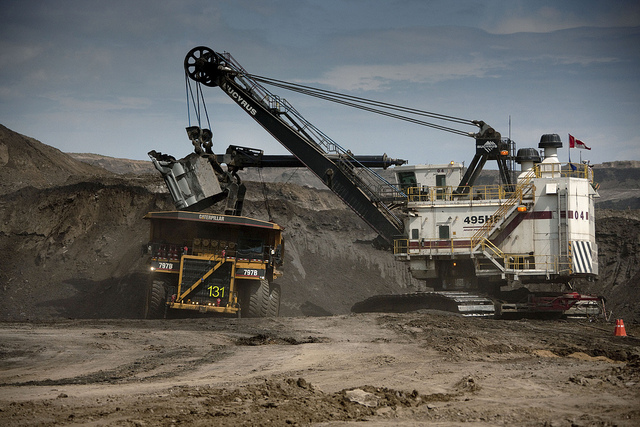When it comes to global warming, the Intergovernmental Panel on Climate Change notes that what matters is the total volume of greenhouse gas emissions going forward. This amounts to about 30 years of emissions at current levels — a global carbon budget that would provide the world a 66 per cent chance of staying below 2°C. There is some debate about whether an upper limit of 2°C is itself too high — it poses unacceptable and catastrophic consequences for the most vulnerable countries — but nonetheless the 2°C target has been adopted in international negotiations towards a new treaty to address climate change.
Carbon budgeting is a fairly new way of conceptualizing the economic and public policy challenges associated with climate change. It restates a classic economic problem — how to allocate resources subject to a budget constraint — in the context of climate and energy policy research. A key implication that between two-thirds and four-fifths of the world’s proven fossil fuel reserves need to stay underground, forever.
This was confirmed by a recent report to the UN on Deep Decarbonization Pathways, which found that proven reserves of fossil fuels represented potential CO2 emissions some 3-7 times larger than the world’s carbon budget. And if we look more broadly at proven plus probable reserves (what they call “resources”), potential emissions are something like 35-60 times larger than the global carbon budget. The conclusion is inescapable: there are vast amounts of “unburnable carbon” out there.
The U.K. outfit Carbon Tracker was the first to point out this means we are seeing a “carbon bubble” in our financial markets — that fossil fuel companies, whose business model is the extraction of carbon, are over-valued on the stock markets of the world. This analysis was subsequently picked up by Bill McKibben in his now-famous article, “Global Warming’s Terrifying Math,” which launched the fossil fuel divestment movement, plus some local content by yours truly in a CCPA report called Canada’s Carbon Liabilities.
The latest from Carbon Tracker looks at planned capital investments in oil production around the world (future reports will look at coal and natural gas). These have different costs of extraction, leading to a “carbon supply cost curve” for oil production. Carbon Tracker argues that in a world of constrained carbon, it only makes economic sense that it will be the high-cost suppliers that get cut out of the action.
This logic is bad news for Alberta’s tar sands, which are among the highest cost reserves. Using an oil and gas industry database, Carbon Tracker looks at a potential $1.1 trillion of capital expenditure on oil projects between 2014 and 2025 that require a price of at least US$95 per barrel market price ($80 break-even) — i.e. those projects most likely to not go ahead in a carbon-constrained world. They find that a very large share of these projects (nearly 40 per cent) are tar sands projects in Alberta (see Figure 7 in particular).
Their advice is to financial investors, highlighting the risk associated with exposure to the high end of the cost curve. Topping the tar sands list is Canadian Natural Resources, a company now infamous for an uncontrolled gush of oil from its in situ operations in Alberta. They have US$38 billion of projected capital expenditures in the tar sands. Suncor is next with $31 billion planned. Shell is next, though the “carbon majors” are less risky as they have diversified portfolios spanning the globe. Cenovus and Athabasca Oil Sands round out the top 5 most risky bets in the tar sands (see Figure 10).
This analysis made big headlines in the U.K. when it was released a couple months ago, but was essentially ignored by Canada’s mainstream media. Indeed, there is rarely a peep about climate risk as Canada deepens its reliance on fossil fuel exports for wealth generation: new pipelines for bitumen, expansion of coal ports, terminals to liquefy natural gas.
There is good reason to think that this is going to change. Pipeline resistance is B.C.’s largest social movement. Obama’s climate plans and action in China have breathed some optimism into climate negotiations aspiring for a new international treaty in 2015. There have also been important wins for the growing movement for divestment from fossil fuels on university campuses and within churches. Combined with legal risks arising from First Nation land claims, the bar is high and getting higher for Alberta bitumen.
For the most part, however, the underlying assumption of Canadian financial markets, including most Canadian pension funds, is that governments of the world will not get their act together, so there is no reason to pull out from fossil fuel investments. Some skepticism that governments will be able to reach a new deal is warranted, but the probability of them doing so is not zero either. But even in the absence of a global treaty, unilateral actions by Canada’s trading partners could impose de facto carbon constraints. Examples include the Keystone XL pipeline and European Fuel Quality directives.
There is a strong possibility that, sooner or later, Canada will be living in a carbon-constrained world, a development that would have significant (and, to date, widely ignored) economic implications. In this context, “responsible resource development” implies strategic management of fossil fuel reserves in order to maximize shared prosperity, within the context of a carbon budget. The good news is that Canadians have been bombarded with several decades of budget talk about “living within our means” — now we just have to apply that to carbon.
Photo: Shell/flickr



